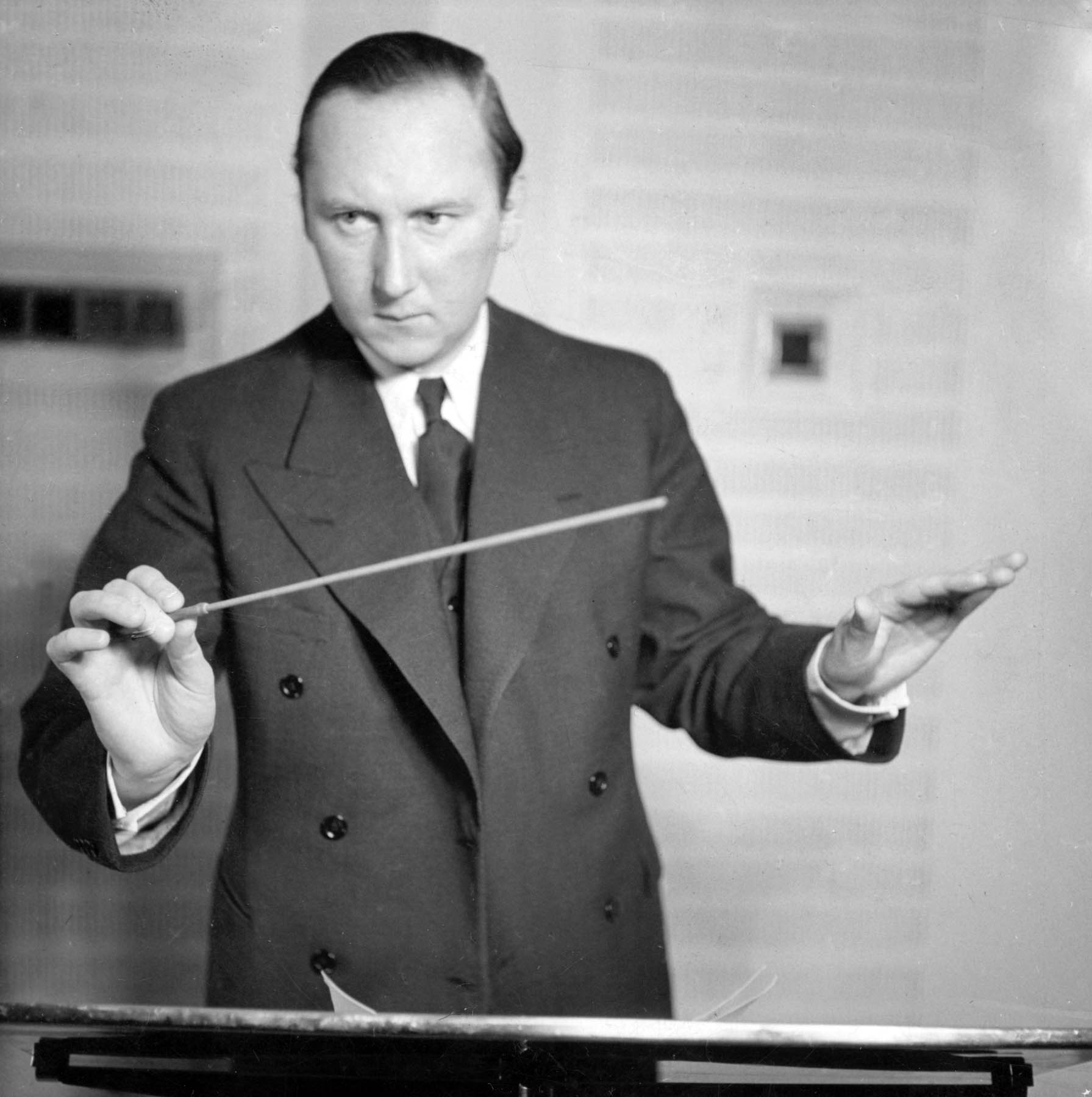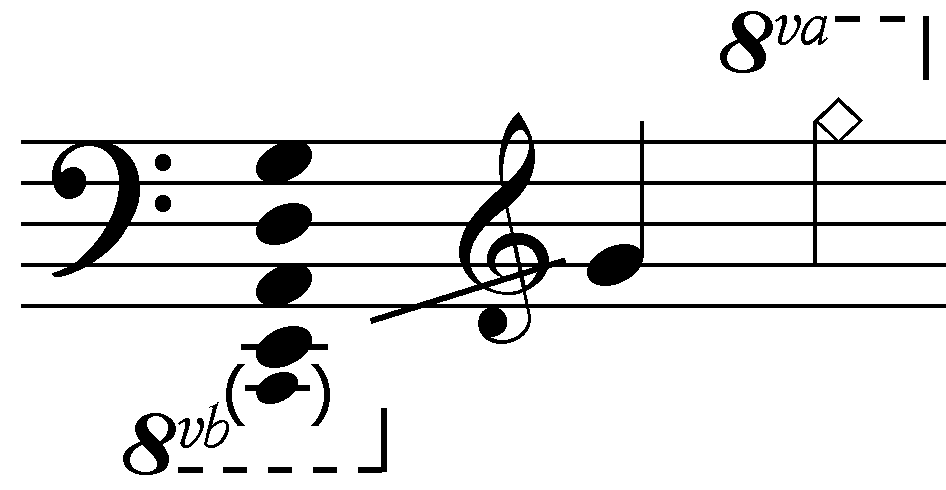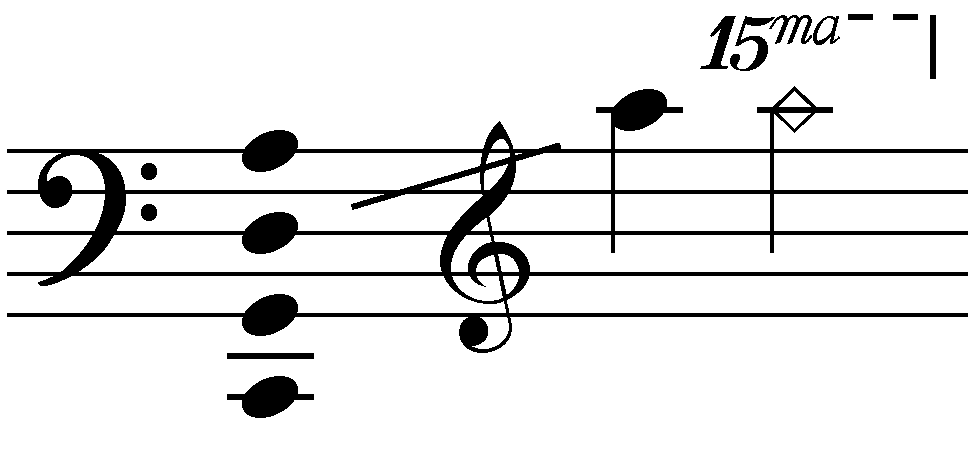|
Sinfonietta (Larsson)
The Sinfonietta in C major, Op. 10, is a three-movement composition for string orchestra written in 1932 by the Swedish composer Lars-Erik Larsson. The piece premiered in Gothenburg on 14 December 1932 with Tor Mann conducting the Gothenburg Orchestral Society. A few years later, on 5 April 1934 at the International Society for Contemporary Music (ISCM) World Music Days in Florence, Hermann Scherchen conducted the Sinfonietta to considerable acclaim, scoring for Larsson the first international success of his career. In response, Universal Edition in Vienna signed a contract with the composer and published a number of his early works, among them the Sinfonietta, the '' Little Serenade'' (; Op. 12, 1934), and the Concert Overture No. 2 (; Op. 13, 1934). Structure The Sinfonietta is in three movements. They are as follows: Instrumentation The Sinfonietta is scored for the following instruments: * Strings: violins, violas, cellos, and double b ... [...More Info...] [...Related Items...] OR: [Wikipedia] [Google] [Baidu] |
Lars-Erik Larsson
Lars-Erik Vilner Larsson (15 May 190827 December 1986) was a Swedish composer, conductor, radio producer, and educator. He wrote three of the most popular works (each a suite) in Swedish art music: ''A Winter's Tale'' (; 1937–1938), the ''Pastoral Suite'' (; 1938), and ''God in Disguise'' (; 1940). Other notable works by Larsson include three symphonies, a sinfonietta, and numerous concertante works. Biography Larsson was born in Åkarp in 1908, the son of a factory worker and a nurse. He studied with Ellberg at the Stockholm Conservatory (1925–1929) and with Alban Berg and Fritz Reuter in Vienna and Leipzig (1929–1930), then worked for Swedish Radio and taught at the Stockholm Conservatory (1947–1959) and Uppsala University, where he held the position as Director musices (1961–1966). His style as a composer is eclectic, ranging from the late Romantic to techniques derived from Arnold Schoenberg's twelve-note system, but original in method. He was the first Swede t ... [...More Info...] [...Related Items...] OR: [Wikipedia] [Google] [Baidu] |
Violin
The violin, sometimes known as a ''fiddle'', is a wooden chordophone (string instrument) in the violin family. Most violins have a hollow wooden body. It is the smallest and thus highest-pitched instrument (soprano) in the family in regular use. The violin typically has four strings (music), strings (some can have five-string violin, five), usually tuned in perfect fifths with notes G3, D4, A4, E5, and is most commonly played by drawing a bow (music), bow across its strings. It can also be played by plucking the strings with the fingers (pizzicato) and, in specialized cases, by striking the strings with the wooden side of the bow (col legno). Violins are important instruments in a wide variety of musical genres. They are most prominent in the Western classical music, Western classical tradition, both in ensembles (from chamber music to orchestras) and as solo instruments. Violins are also important in many varieties of folk music, including country music, bluegrass music, and ... [...More Info...] [...Related Items...] OR: [Wikipedia] [Google] [Baidu] |
Classical Music In Sweden
Classical may refer to: European antiquity * Classical antiquity, a period of history from roughly the 7th or 8th century B.C.E. to the 5th century C.E. centered on the Mediterranean Sea * Classical architecture, architecture derived from Greek and Roman architecture of classical antiquity * Classical mythology, the body of myths from the ancient Greeks and Romans *Classical tradition, the reception of classical Greco-Roman antiquity by later cultures *Classics, study of the language and culture of classical antiquity, particularly its literature * Classicism, a high regard for classical antiquity in the arts Music and arts * Classical ballet, the most formal of the ballet styles *Classical music, a variety of Western musical styles from the 9th century to the present *Classical guitar, a common type of acoustic guitar * Classical Hollywood cinema, a visual and sound style in the American film industry between 1927 and 1963 * Classical Indian dance, various codified art forms whos ... [...More Info...] [...Related Items...] OR: [Wikipedia] [Google] [Baidu] |
20th-century Classical Music
20th-century classical music describes art music that was written nominally from 1901 to 2000, inclusive. Musical style diverged during the 20th century as it never had previously. So this century was without a dominant style. Modernism, impressionism, and post-romanticism can all be traced to the decades before the turn of the 20th century, but can be included because they evolved beyond the musical boundaries of the 19th-century styles that were part of the earlier common practice period. Neoclassicism and expressionism came mostly after 1900. Minimalism started much later in the century and can be seen as a change from the modern to post-modern era, although some date post-modernism from as early as about 1930. Aleatory, atonality, serialism, ''musique concrète'', electronic music, and concept music were all developed during the century. Jazz and ethnic folk music became important influences on many composers during this century. History At the turn of the century, mus ... [...More Info...] [...Related Items...] OR: [Wikipedia] [Google] [Baidu] |
Symphonies By Lars-Erik Larsson
A symphony is an extended musical composition in Western classical music, most often for orchestra. Although the term has had many meanings from its origins in the ancient Greek era, by the late 18th century the word had taken on the meaning common today: a work usually consisting of multiple distinct sections or movements, often four, with the first movement in sonata form. Symphonies are almost always scored for an orchestra consisting of a string section (violin, viola, cello, and double bass), brass, woodwind, and percussion instruments which altogether number about 30 to 100 musicians. Symphonies are notated in a musical score, which contains all the instrument parts. Orchestral musicians play from parts which contain just the notated music for their own instrument. Some symphonies also contain vocal parts (e.g., Beethoven's Ninth Symphony). Etymology and origins The word ''symphony'' is derived from the Greek word (), meaning "agreement or concord of sound", "concert ... [...More Info...] [...Related Items...] OR: [Wikipedia] [Google] [Baidu] |
Radiohuset (Stockholm)
Radiohuset ("the radio house") in Östermalm, Stockholm, is the main headquarters building of Sveriges Radio (SR). Located on Oxstiernsgatan in the Förrådsbacken district, it stands next to Sveriges Television's TV-huset and close to Filmhuset, the headquarters of the Swedish Film Institute. Also nearby is the popular open-air recreational area known as Gärdet. Programmes produced at Radiohuset are broadcast throughout Sweden on SR's four national radio channels, P1, P2, P3, and P4, and also feature in the multi-lingual output of SR International – Radio Sweden (P6). In 2008, SR's local station in the capital, Radio Stockholm (today with two channels, known as P4 Radio Stockholm and P5 STHLM), moved to Radiohuset from its previously separate studios in Kungsholmen. The building was first planned in 1955, to designs prepared by the architects Erik Ahnborg and Sune Lindström Sune Lindström (2 November 1906 – 31 October 1989) was a Swedish architect. He was born ... [...More Info...] [...Related Items...] OR: [Wikipedia] [Google] [Baidu] |
Sami Sinfonietta
Acronyms * SAMI, ''Synchronized Accessible Media Interchange'', a closed-captioning format developed by Microsoft * Saudi Arabian Military Industries, a government-owned defence company * South African Malaria Initiative, a virtual expertise network of malaria researchers People * Samee, also spelled Sami, a male given name * Sami (name), including lists of people with the given name or surname * Sámi people, indigenous people of the Scandinavian Peninsula, the Kola Peninsula, Karelia and Finland ** Sámi cuisine ** Sámi languages, of the Sami people ** Sámi shamanism, a faith of the Sami people Places * Sápmi, a cultural region in Northern Europe * Sami (ancient city), in Elis, Greece * Sami Bay, east of Sami, Cephalonia * Sami District, Gambia * Sami, Burkina Faso, a district of the Banwa Province * Sami, Cephalonia, a municipality in Greece * Sami, Gujarat, a town in Patan district of Gujarat, India * Sami, Paletwa, a town in Chin State, Myanmar * Sämi, a village in ... [...More Info...] [...Related Items...] OR: [Wikipedia] [Google] [Baidu] |
Stefan Parkman
Stefan Parkman (born 22 June 1952, in Uppsala) is a Swedish conductor. He is a professor at Uppsala University, where he holds the Eric Ericson chair of choral conducting. From 2002 to 2005, Parkman was the head conductor of the Swedish Radio Choir, and he has also been the conductor of the Danish Radio Choir and the Boys' Choir of Uppsala Cathedral. Since 1983, he has been the leader of Uppsala Akademiska Kammarkör. Parkman was awarded the Danish Order of the Dannebrog in 1997. In 1998, he was elected a member of the Royal Swedish Academy of Music The Royal Swedish Academy of Music ( sv, Kungliga Musikaliska Akademien), founded in 1771 by King Gustav III, is one of the Royal Academies in Sweden. At the time of its foundation, only one of its co-founder was a professional musician, Fer .... [...More Info...] [...Related Items...] OR: [Wikipedia] [Google] [Baidu] |
Örebro Concert Hall
The Örebro Concert Hall ( sv, Örebro konserthus) is a concert hall located in Örebro, Sweden. It was built between 1930 and 1932. The hall can accommodate 723 people. Notable past performers include Budgie and Elvis Costello Declan Patrick MacManus OBE (born 25 August 1954), known professionally as Elvis Costello, is an English singer-songwriter and record producer. He has won multiple awards in his career, including a Grammy Award in 2020, and has twice been nom .... References External linksOfficial Website Concert halls in Sweden Music venues completed in 1932 Buildings and structures in Örebro Culture in Örebro 1932 establishments in Sweden {{Sweden-struct-stub ... [...More Info...] [...Related Items...] OR: [Wikipedia] [Google] [Baidu] |
Swedish Chamber Orchestra
The Swedish Chamber Orchestra ( sv, Svenska kammarorkestern) is a Swedish orchestra based in Örebro. Established under its current name in 1995, its primary concert venue is the Örebro Concert Hall. The historical precursor ensembles to the orchestra included the ''Harmonic Society'' (Harmoniska sällskapet), which was active from 1831 to 1837. In 1859, the ''Philharmoniska sällskapet'' (Philharmonic Society) was founded under Karl Johan Lewerth. A competitor organisation, the ''Örebro musikförening Philomele'' (Örebro Music Association Philomele), was founded in 1868, and continued operations until 1916. In 1909, the ''Örebro orkesterförening'' (Örebro Orchestra Association), as an amateur orchestra. The ensemble began to receive support from the Örebro municipality in 1912. The composer Ingvar Lidholm took up a leadership post with the ensemble in 1947. In 1950, four full-time band musicians joined the orchestra. In 1955, the organisation was transformed into a municipal ... [...More Info...] [...Related Items...] OR: [Wikipedia] [Google] [Baidu] |
Double Bass
The double bass (), also known simply as the bass () (or #Terminology, by other names), is the largest and lowest-pitched Bow (music), bowed (or plucked) string instrument in the modern orchestra, symphony orchestra (excluding unorthodox additions such as the octobass). Similar in structure to the cello, it has four, although occasionally five, strings. The bass is a standard member of the orchestra's string section, along with violins, viola, and cello, ''The Orchestra: A User's Manual'' , Andrew Hugill with the Philharmonia Orchestra as well as the concert band, and is featured in Double bass concerto, concertos, solo, and chamber music in European classical music, Western classical music.Alfred Planyavsky [...More Info...] [...Related Items...] OR: [Wikipedia] [Google] [Baidu] |
Cello
The cello ( ; plural ''celli'' or ''cellos'') or violoncello ( ; ) is a Bow (music), bowed (sometimes pizzicato, plucked and occasionally col legno, hit) string instrument of the violin family. Its four strings are usually intonation (music), tuned in perfect fifths: from low to high, scientific pitch notation, C2, G2, D3 and A3. The viola's four strings are each an octave higher. Music for the cello is generally written in the bass clef, with tenor clef, and treble clef used for higher-range passages. Played by a ''List of cellists, cellist'' or ''violoncellist'', it enjoys a large solo repertoire Cello sonata, with and List of solo cello pieces, without accompaniment, as well as numerous cello concerto, concerti. As a solo instrument, the cello uses its whole range, from bassline, bass to soprano, and in chamber music such as string quartets and the orchestra's string section, it often plays the bass part, where it may be reinforced an octave lower by the double basses. Figure ... [...More Info...] [...Related Items...] OR: [Wikipedia] [Google] [Baidu] |





